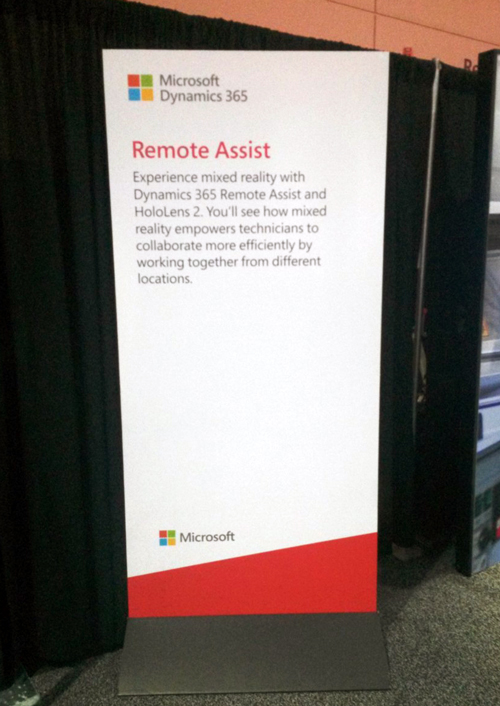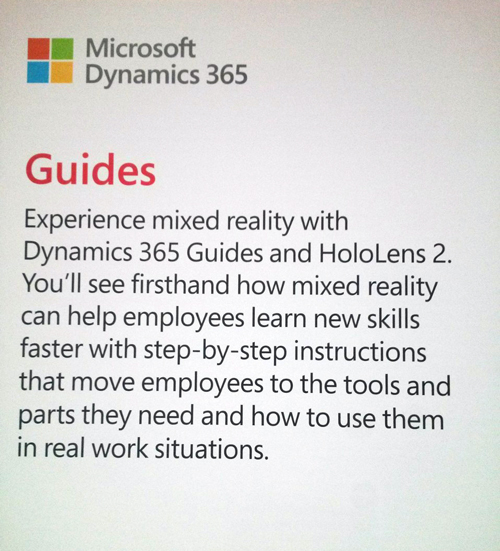Posey's Tips & Tricks
First Look at HoloLens 2: What's Better and What Still Needs Work
While imperfect, the HoloLens 2 is a dramatic improvement over its predecessor. Brien details where the new mixed-reality headset excels and where it still falls short.
Nearly a year ago, I wrote a column detailing all of the nice new features that we could expect to see in the then-forthcoming HoloLens 2. As is always the case, though, there is a considerable lag between the time that Microsoft announces a new product and the time when customers (or tech journalists) can actually try it out for themselves.
I finally got the chance to test drive HoloLens 2 at Microsoft Ignite 2019 late last year, right before Microsoft announced its official rollout. Microsoft had set up two separate demos at the conference. The first of these demos was designed to demonstrate how a technician could provide remote assistance through the HoloLens 2. The demo involved placing a call to a technician who would then guide the HoloLens user through the process of repairing an industrial machine.
 [Click on image for larger view.] Figure 1: This was Microsoft's description of the remote assistance demo.
[Click on image for larger view.] Figure 1: This was Microsoft's description of the remote assistance demo.
Although I tried this particular demo twice (standing in line for over an hour each time), the demo failed on both attempts. In each case I was able to establish a video conference with the technician, but the demo crashed after less than a minute. I will concede, however, that these crashes seemed to be a case of bad luck. Other participants were able to complete the demo without issue.
The other demo was designed to teach the user how to perform a task, such as assembling a piece of equipment. That demo worked flawlessly and I got a good feel for the HoloLens 2's capabilities.
 [Click on image for larger view.] Figure 2: This was the second HoloLens 2 demo offered at Ignite.
[Click on image for larger view.] Figure 2: This was the second HoloLens 2 demo offered at Ignite.
Before my trip to Ignite, I kept hearing that the HoloLens 2 was lighter-weight and more comfortable than its predecessor. I didn't really notice the difference in weight, but then again I didn't have a first-generation HoloLens available for side-by-side comparison. I will say that the HoloLens 2 was comfortable aside from being hot. I don't attribute the heat to poor design, but rather to the fact that the unit had been in use for the entire day.
The biggest thing that I was curious about was the HoloLens 2's display. The first-generation HoloLens suffered from a very narrow vertical field of view. As you move your head up and down, holograms disappeared from view, sinking below an invisible line in the optics.
In creating HoloLens 2, Microsoft more than doubled the device's field of view while also improving the display quality. As cool as the first-generation HoloLens might have been, its narrow field of view kept it from realizing its full potential.
When I put on the HoloLens 2, one of the first things I noticed was that the issue with vertical head movements causing holograms to fall outside of the device's field of view still exists. At first, I was super-disappointed with the device's display. But then something weird happened: As I worked through the demo, I found that the display was so good that I nearly forgot that I was wearing the device.
The only way I can explain this dichotomy is that initially I probably expected the display to be fully immersive, much like Microsoft's mixed-reality headsets. Once I got into the demo, however, I began to realize that the device's field of view was wide enough that its limitations really didn't matter very much.
I think the other reason why I nearly forgot that I was wearing the HoloLens 2 during the demo was because the HoloLens 2 allows you to interact with holographic objects in a much more natural way, rather than requiring you to use obscure hand gestures as was the case in the past.
The HoloLens 2's wider field of view, improved optics (which were really good) and support for more natural interaction with holograms all combined to deliver an extremely compelling experience. Even though the device is not perfect, it is a dramatic improvement over Microsoft's first-generation HoloLens.
To put it another way, I have always thought that the first-generation HoloLens felt a bit like a prototype. In contrast, HoloLens 2 feels like a finished product. My guess is that when Microsoft builds HoloLens 3 in a few years, it will deliver an experience that is completely stunning, forever blurring the lines between what is real and what is just a computer-generated illusion.
About the Author
Brien Posey is a 22-time Microsoft MVP with decades of IT experience. As a freelance writer, Posey has written thousands of articles and contributed to several dozen books on a wide variety of IT topics. Prior to going freelance, Posey was a CIO for a national chain of hospitals and health care facilities. He has also served as a network administrator for some of the country's largest insurance companies and for the Department of Defense at Fort Knox. In addition to his continued work in IT, Posey has spent the last several years actively training as a commercial scientist-astronaut candidate in preparation to fly on a mission to study polar mesospheric clouds from space. You can follow his spaceflight training on his Web site.